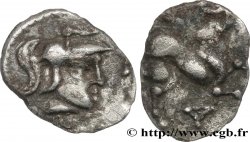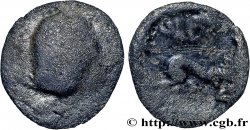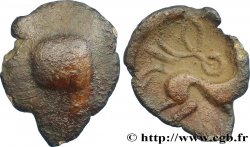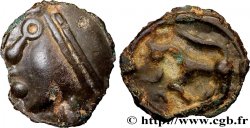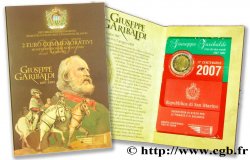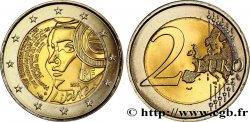bga_530092 - GALLIA - CENTROVESTE - INCERTI Obole au carré
157.00 €
Quantità
Aggiungi al carrello

Tipo : Obole au carré
Data: IIe - Ier siècles avant J.-C.
Metallo : argento
Diametro : 10 mm
Peso : 0,68 g.
Grado di rarità : R3
Commenti sullo stato di conservazione:
Flan voilé. Joli revers fin. Patine grise
Diritto
Titolatura diritto : ANÉPIGRAPHE.
Descrittivo diritto : Carré en relief.
Rovescio
Titolatura rovescio : ANÉPIGRAPHE.
Descrittivo rovescio : Cheval (androcéphale ?) à droite ; une victoire stylisée dégénérée de Bridiers, au-dessus de la croupe.
Commento
Ce monnayage était inédit jusqu'à très récemment ; il est repris dans le Nouvel Atlas Tome III comme type VII "à la protubérance carrée" de la série 1088 "fractions en argent des peuples centraux". La victoire du revers se retrouve sur les oboles attribuées aux Cénomans ; elle est imitée des drachmes de Bridiers. Deux types de revers sont connus ; avec le revers à droite et avec le revers à gauche, mais la plupart des quelques exemplaires connus ont un revers à droite.
Sur cet exemplaire, le cheval ne semble pas androcéphale, mais plutôt avoir une énorme mâchoire ouverte en guise de tête (? ?).
This coinage was unprecedented until very recently; it is included in the New Atlas Volume III as type VII \\\"with the square protuberance\\\" of the series 1088 \\\"silver fractions of the central peoples\\\". The reverse victory is found in the mite attributed to the Cenomans; it is imitated from the drachmas of Bridiers. Two types of setbacks are known; with the reverse on the right and with the reverse on the left, but most of the few known examples have a reverse on the right. In this example, the horse does not appear to be androcephalic, but rather to have a huge open jaw as a head (??)
Sur cet exemplaire, le cheval ne semble pas androcéphale, mais plutôt avoir une énorme mâchoire ouverte en guise de tête (? ?).
This coinage was unprecedented until very recently; it is included in the New Atlas Volume III as type VII \\\"with the square protuberance\\\" of the series 1088 \\\"silver fractions of the central peoples\\\". The reverse victory is found in the mite attributed to the Cenomans; it is imitated from the drachmas of Bridiers. Two types of setbacks are known; with the reverse on the right and with the reverse on the left, but most of the few known examples have a reverse on the right. In this example, the horse does not appear to be androcephalic, but rather to have a huge open jaw as a head (??)







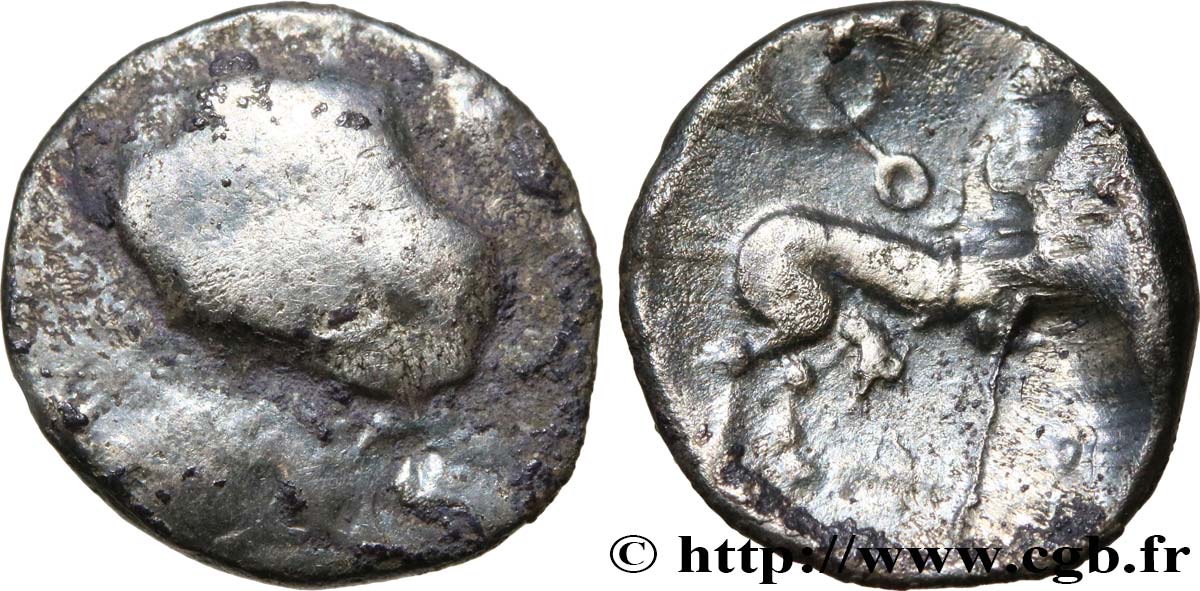
 Segnalare un errore
Segnalare un errore Stampate la pagina
Stampate la pagina Condividi mia selezione
Condividi mia selezione Fai una domanda
Fai una domanda Consegnare / vendere
Consegnare / vendere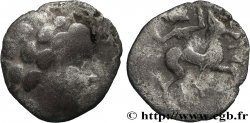
 Descrittivo
Descrittivo